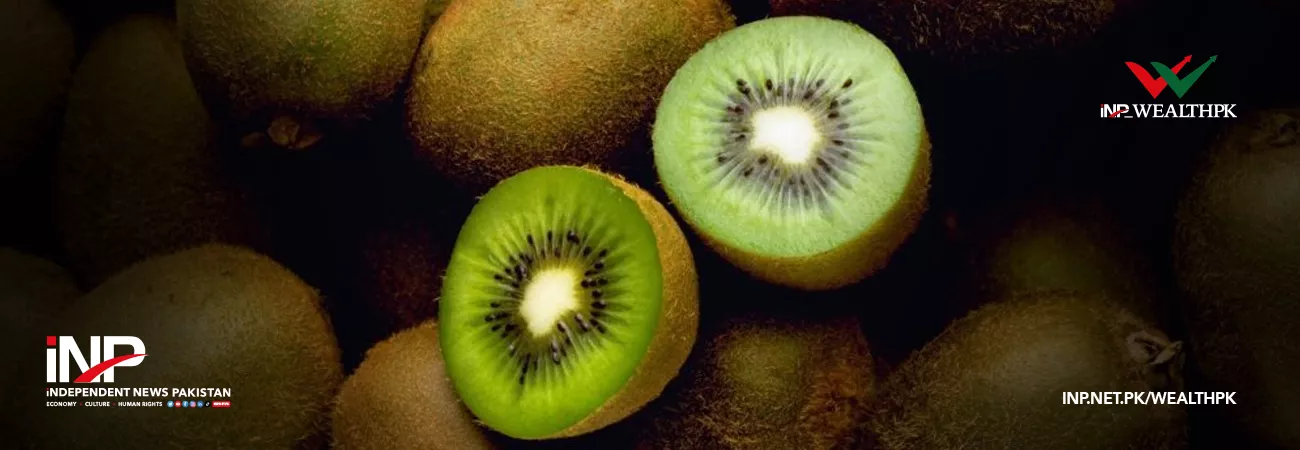INP-WealthPk
Azeem A. Khan
Pakistan Agricultural Research Council (PARC) scientists have successfully commercialised the high-value kiwifruit in Pakistan, and now its plants are being distributed to farmers in all suitable areas of the country. "Foreign experts have confirmed that the qualitative and quantitative traits of the Pakistani produced kiwifruit are far better than other growing countries of the world," Dr Abdul Waheed, former director of PARC - National Tea and High Value Crops Research Institute (NTHRI), Shinkiari, told WealthPK.
"We are growing 100% organic kiwifruit and our climate is absolutely perfect for this fruit crop, so the taste of our fruit is neither too sweet nor too sour; rather, it is mild in taste, has juicy pulp, and is very much liked by the people," he said. As a result, exporting Pakistani kiwifruit might result in a big profit and a significant source of foreign exchange revenue.
According to Dr Waheed, who was a member of the research team that introduced this fruit to Pakistan roughly 10 years ago, Nepal is already making a sizable amount of foreign cash from its exports and playing a vital role in their economy. “Internationally, kiwifruit typically produces 30 to 35kg of fruit per plant, while in Pakistan, kiwifruit has produced more than 40 to 55kg of fruit per plant, and has been successfully proven through all of its experimental trials,” Dr Waheed said.
The fruit is extremely tough, as it has a shelf life of about three months even without refrigeration and does not lose its taste, quality, or shape even in a simple paper box. Since its skin resembles that of New Zealand’s native flightless bird, the kiwifruit is named after it. The shortened name kiwi is commonly used when referring to the fruit. Dr Waheed said that it was initially used in Pakistan's kitchen gardening. When people travelled, they brought the plant back with them so that it could be grown in places with cold climates, such as Swat, Kashmir, and Gilgit-Baltistan.
In October 2013, Pakistan sought Nepal’s support for cultivating kiwifruit. In response, a Nepalese kiwi expert team visited Pakistan in 2014 and trained some PARC scientists. Besides, it gifted 200 plants and one kilogramme of kiwi seeds to propagate on an experimental basis. Those plants were experimented on in the capital Islamabad, Chakwal city of Punjab province, and Khyber Pakhtunkhwa’s Shinkiari/Mansehra areas.
Right from its commencement on an experimental basis, this special fruit has performed well in the Shinkiari/Mansehra climate, but perished in Islamabad and Chakwal owing to the extreme or unpredictable high temperatures. “Many more farmers in the cultivable areas intend to grow kiwifruit on their own lands as a consequence of the extremely positive results achieved by PARC-NTHRI, Shinkiari, and its suburban areas,” Dr Waheed said.
The NTHRI has established eight kiwifruit orchards in Hazara Division and provided technical, financial, and infrastructure facilities for its promotion on a commercial scale as the most lucrative fruit crop. From its established mother orchards at NTHRI, which only have 118 mother plants, Shinkiari has produced about one tonne of fresh kiwifruit annually since the fruit first began to ripen in 2017.
“In this particular geographical climate, it often enters the bearing stage three to four years after planting. The existing kiwi fruit trees in the Swabi area of Khyber Pakhtunkhwa province are producing good results,” Dr Waheed said. Due to the similar topography, climate, and weather conditions, these plants can also produce good results in Azad Kashmir, Abbottabad, Battagram, Kohistan, Murree, Swat, Gilgit-Baltistan, and North and South Waziristan.
This plant's growth is significantly influenced by its environment. The best range of temperature for flourishing is between 22 and 28 degrees centigrade. However, survival chances decrease significantly at temperatures above 35 degrees centigrade.
Farmers are showing great interest in kiwifruit plantations in prospective growing areas of the country, and the NTHRI is trying to meet their demand for baby plants. “The institute now has the capacity to produce 30,000 plants annually, which is a big achievement for PARC," Dr Waheed said. He said PARC-NTHRTI has experimented successfully with the top eight kiwifruit varieties of New Zealand, China, and Nepal known as Hayward, Hort 16-A, Hong Yang, Bruno, Actinidia Arguta, and Jinyan as well.
Kiwifruit plants can equally be planted on barren or fertile lands with good organic matter and good horticultural practises. As per experimental results, farmers can benefit from this crop over the long term to earn significantly more money than other crops. It is not only more accessible but also easier to market.
“Even though the kiwifruit is native to China, only wild kinds exist there,” said Dr Waheed. Consumption of kiwi fruit is rising quickly in Pakistan, and imports from China, Iran, and New Zealand are being used to meet the demand. There is a big market for locally grown kiwi fruit, which is even superior in terms of quality and flavour.
Credit: Independent News Pakistan-WealthPk




